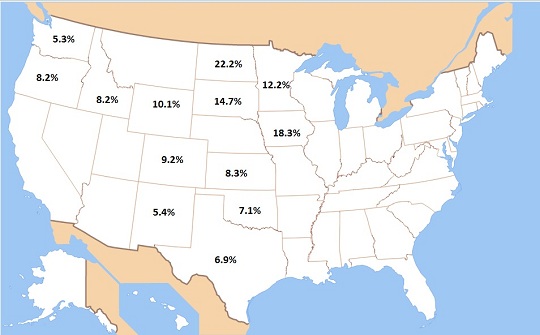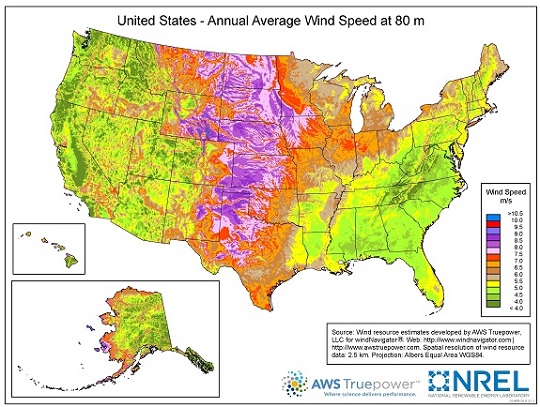In the wind-rich Midwestern United States, one state – Nebraska – is missing the boat on wind. Now a new report [PDF] suggests getting on board could be a big economic and health boon for Cornhuskers.
First the current state of affairs: According to the American Wind Energy Association, all the states that have substantial borders with Nebraska get more than 5 percent of their electricity from wind, usually much more, with Iowa (18.3 percent), South Dakota (14.7) and Wyoming (10.1) all in double figures on wind.

Nebraska, despite having what the National Renewable Energy Laboratory says is the fourth-best wind resource in the country, gets just 1.2 percent of its electricity from wind.
So how does Nebraska generate its electrcity? Coal, baby; king coal might be in decline in the U.S., but it’s still big in Nebraska. There aren’t any coal mines in Nebraska, but there are a lot next door in Wyoming, far and away the biggest coal-producing state in the country, and so that coal gets brought in to generate around two-thirds of Nebraska’s electricity.

According a the new report co-authored for the Sierra Club by American Council for an Energy-Efficient Economy fellow John A. “Skip” Laitner, the state could do a lot better by joining its neighbors in encouraging wind power development, and also by investing in energy efficiency. Laitner writes:
Productive investments in wind energy systems and more energy-efficient technologies can provide more than half of Nebraska’s electricity needs by 2030. It is both technically and economically feasible. Such investments can lead to nearly 14,000 new jobs for Nebraska’s economy while saving businesses and consumers a cumulative of $3.8 billion in lower electric bills over the next two decades – meaning a net benefit of more than $2,000 for every resident in the state today.
The first question likely to be raised by naysayers: What about the cost – won’t wind drive up electricity costs? Well, according to Laitner, electricity costs are already going up for Nebraskans. He notes that the Nebraska Public Power District recently hiked wholesale and retail rates 6.5 percent, telling its customers that “fuel costs have risen more than 50 percent in the past five years and fuel transportation costs are rising significantly in 2012.”
And while there would be some additional costs because more wind would require switching to some higher-cost reserves, Laitner notes that “recently, Nebraska’s neighbors have demonstrated that very high levels of wind penetration can be achieved and at costs as low as 2.75 cents/kWh,” which is very cheap indeed.

Meanwhile, Laitner estimates that coal results in 13,600 lost work days due to illness in the state, and as many as 81,000 “minor restricted activity days in which both children and adults must slow down their normal activities because of respiratory health effects” from coal. Kicking coal would change all that, in addition to dramatically decreasing the state’s greenhouse-gas contribution.
But the wind argument that might resonate most powerfully in this deeply red state is the economic one. In 2009, Nebraska sent $338 million to Wyoming. If it ratcheted wind up to the levels of some of its neighbors, much of that money could stay home.
And a recent study showed just how beneficial that could be: “Taking into account factors influencing wind turbine location, we find an aggregate increase in county-level personal income and employment of approximately $11,000 and 0.5 jobs per megawatt of wind power capacity installed over the sample period of 2000 to 2008,” reported researchers from the U.S. Department of Agriculture’s Eoconomic Research Service, Lawrence Berkeley National Laboratory and the National Renewable Energy Laboratory.